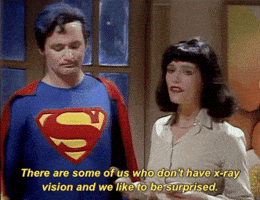As you get older, your body undergoes some changes. One significant change many people experience with aging is losing their vision.

The most common eye-related conditions are age-related. One of the most common of these age-related conditions is cataracts.
Cataracts affect around half of all adults in their sixties and seventies. But you can get cataracts at any age.
You are at higher risk for developing cataracts when you turn forty. So if you’re in your sixties or seventies and have blurry vision, you may have cataracts.
Keep reading to learn more about cataracts and determine what you can do to ensure they do not take your eyesight!
What are Cataracts?
Cataracts are what happens when your eye’s natural lens becomes cloudy. As you age, the proteins in your lenses begin to break down and clump together.
As the proteins form clumps, they make your lenses cloudy and less transparent. This cloudiness obviously makes it difficult to see.

It’s why people with cataracts say that it feels like they are looking through a foggy window. It is still unclear what exactly causes them, but it tends to happen more as you get older.
Cataracts can also occur along with other conditions, and some people are even born with congenital cataracts. But most commonly, cataracts are a result of the normal aging process.
Cataract Risk Factors
While the exact cause of cataracts is unknown, and you can’t prevent them, they do have risk factors. These are traits that are common in many individuals who develop cataracts.
Common cataract risk factors include:
- Being over forty
- Diabetes
- Obesity
- Tobacco use
- Excessive alcohol consumption
- Sun damage
- Family history
Some of these risk factors are controllable. The best way to lower your risk for cataracts is simply to live a healthy lifestyle.
That means it is advisable to stay active, eat right, don’t smoke, wear sunglasses, and drink in moderation. Other risk factors, of course, like your age and family history, are impossible to control.
But maintaining general health is good for you and can only boost your eye health. Still, you can’t entirely prevent cataracts, and you may end up having them at some point in life.
As you enter into more risk factor groups like getting older or developing diabetes, there are a few symptoms to look out for.
Cataract Symptoms
Common cataract symptoms include:
- Blurry vision
- Light sensitivity
- Glare
- Halos
- Poor night vision
- Difficulty seeing contrast
Cataracts tend to develop slowly over months and years. Unfortunately, this progressive development can make it hard to realize you are having visual problems.

The gradual onset makes it challenging to notice the symptoms until they are severely affecting your vision. Often, cataract symptoms get mistaken for presbyopia, which is age-related farsightedness.
Patients with cataracts also often have presbyopia, but cataracts alone don’t cause difficulty focusing up close. But they can make it difficult to read because they cause poor low-light vision.
One good indicator that you may have cataracts is trouble driving at night. This is because cataracts can make it challenging to see in low-light and make you sensitive to other cars’ headlights on the road.
These symptoms can make it nearly impossible to drive at night. If you’re having trouble driving at night, you should stop and see your eye doctor.
Having trouble driving at night or experiencing other symptoms could mean you have cataracts. If you think cataracts may be affecting your vision, you should see your eye doctor.
But even if you can’t pinpoint your symptoms, it is still possible to have cataracts.
How Do You Diagnose Cataracts?
People over the age of forty should have regular appointments with their eye doctor. Frequent visits to your ophthalmologist ensure any eye condition gets diagnosed early. Whether it is cataracts or something else, these visits are vital to your health.
Even if you aren’t aware of cataracts, your eye doctor will still be able to spot them during a routine exam. Early detection allows your eye doctor to track their progress and recommend treatment at the right time.
Treatment for cataracts usually starts when they begin to affect your quality of life. So catching them early and monitoring them is the most efficient way to get prompt treatment when they become a problem.
How Do You Treat Cataracts?
There’s only one way to treat cataracts, and that’s to have them removed through cataract surgery. Cataract surgery removes your cloudy natural lens and replaces it with an intraocular lens, or IOL.
IOLs will give you your eyesight back. Some IOLs can even improve your vision if you have worn glasses or contacts your entire life.

Certain IOLs can give you seamless distance, up-close and intermediate vision. And most IOLs come in a toric model, which means they can also correct astigmatism, all during cataract surgery.
Cataract surgery is the most common medical procedure in the country. And it is an outpatient procedure, meaning you’ll be able to go home the same day as surgery.
It’s performed on one eye at a time. So if you have cataracts in both eyes, you’ll have one eye treated during one session and then the other treated a couple of weeks later.
Doctors only recommend cataract surgery when a patient is struggling with everyday activities. This is because cataracts can develop so slowly that some people may never need cataract surgery.
But when your cataracts begin to affect your quality of life, cataract surgery is an effective treatment. So if you have severe cataract symptoms, see your eye doctor as soon as you can and ask them about cataract surgery.
Also, be sure to have regular eye exams to have your cataracts and other eye conditions diagnosed as quickly as possible.
Do you think cataracts are affecting your vision? If you feel like they are disrupting your everyday life, schedule an appointment at Sugiki-Portis-Yim Eye Center in Honolulu, HI.
Don’t let cataracts make your life harder any longer!





